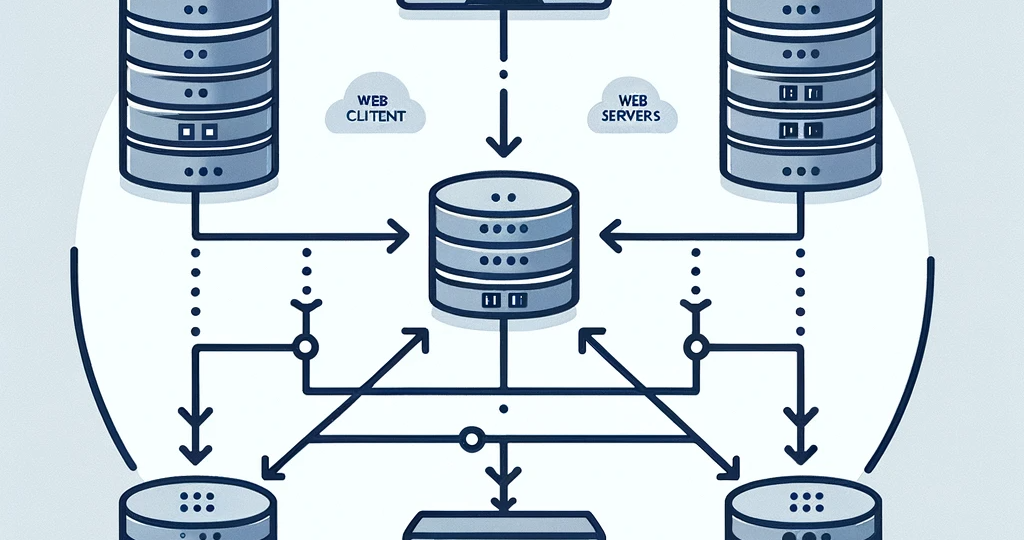Understanding the Difference Between Web Application Servers and Web Servers
2023-12-29 | by reerr.com

In modern IT infrastructure, Web Application Servers (WAS) and Web Servers play crucial roles. Although they both serve key functions in many web-based services, they differ significantly in their capabilities and roles. This post aims to elucidate the basic concepts and differences between WAS and Web Servers, and analyze their respective advantages and disadvantages to aid in server technology selection.
Concept of Web Application Servers (WAS)
Web Application Servers, or WAS, are responsible for executing application code in response to user requests and delivering the results back to the users. They typically manage complex transactions, including database queries and various logic processes. WAS is designed to handle dynamic content and provide a platform for developers to build and deploy web applications.
Concept of Web Servers
On the other hand, Web Servers primarily deliver static content. This involves transferring static files like HTML, CSS, and JS to the client. Web Servers are optimized for handling lightweight requests and are commonly used to serve web pages, images, and other static resources.
Differences between Web Application Servers and Web Servers
The main difference between WAS and Web Servers lies in the type of content they handle. WAS mainly deals with dynamic content, such as processing user input, interacting with databases, and generating dynamic web pages. Web Servers, on the other hand, focus on delivering static content, such as HTML files, CSS stylesheets, and JavaScript files.
Separating these two systems allows for more efficient resource management and quicker response times. By offloading the task of delivering static content to a dedicated Web Server, the Web Application Server can focus on processing dynamic requests, resulting in improved performance and scalability.
Advantages and Disadvantages of Web Application Servers
Web Application Servers offer several advantages in handling dynamic content:
- Capable of processing complex application logic: WAS provides a robust platform for executing complex business logic and handling intricate workflows.
- Supports interaction with databases: WAS can seamlessly interact with databases, making it easier to retrieve and update data as part of the application process.
- Provides dynamic content: With the ability to generate dynamic web pages, WAS enables personalized and interactive user experiences.
However, there are some disadvantages to consider when using Web Application Servers:
- Relatively higher resource demands: Due to the nature of handling dynamic content and complex application logic, WAS typically requires more system resources, such as CPU and memory.
- Requires complex configuration and management: Setting up and managing a Web Application Server can be more complex compared to a Web Server, requiring expertise in application development and server administration.
Advantages and Disadvantages of Web Servers
Web Servers offer several advantages in handling static content:
- Quick processing of static content: Web Servers are optimized to efficiently deliver static files, resulting in faster response times for clients.
- Low resource demands: Since Web Servers primarily handle lightweight requests, they require fewer system resources compared to Web Application Servers.
- Simple configuration and management: Setting up and managing a Web Server is relatively straightforward, making it easier for administrators to deploy and maintain.
However, there are some limitations to consider when using Web Servers:
- Cannot process dynamic content: Web Servers lack the capability to execute application logic or interact with databases, limiting their use to serving static content only.
- Limited in handling application logic: Without the ability to process dynamic content, Web Servers are not suitable for applications that require complex business logic or database interactions.
Conclusion
Understanding the strengths and weaknesses of both Web Application Servers and Web Servers is vital in making informed decisions when it comes to server technology selection. While Web Application Servers are capable of handling dynamic content and complex application logic, they come with higher resource demands and require more complex configuration and management. On the other hand, Web Servers excel at delivering static content quickly and efficiently, but lack the ability to process dynamic content or handle complex application logic.
The choice between Web Application Servers and Web Servers should be based on the specific requirements of the service and the availability of resources. In many cases, a combination of both server technologies is used, effectively utilizing their strengths for optimal performance. By leveraging the strengths of each server technology, businesses can deliver robust and scalable web-based services to their users.
RELATED POSTS
View all


